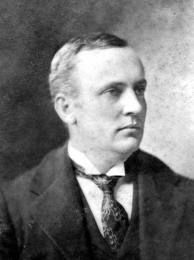Remembering Suwannee: Drew Bridge features unique design
Published 11:00 am Monday, June 4, 2018

- Frank Drew
Suwannee County has seen numerous technical advances during its history. Many of these advances last for only a short period of time before being made obsolete by emerging technologies. Other advancements are relegated to disrepair and forgotten because of changing fortunes. One such object stands in mute testimony to a different time, a time when multiple railroads crisscrossed the forests of the county, a time when men such as Thomas Dowling, the Drew family, and others made their mark on not only Suwannee County, but also the whole state. But first, some background information…
George Franklin Drew was born in Alton, New Hampshire, in 1827. He moved to Columbus, Georgia, prior to the Civil War and settled into the lumber business, among other endeavors. The end of the Civil War saw him move to the Suwannee Valley area to start life anew. In 1877, he became the first post-reconstruction governor of Florida, serving one term before retiring to private life. Among Drew’s businesses was the Drew Lumber Company, which he operated along with his sons George L. and Frank Drew. The company expanded throughout Suwannee County and into neighboring counties.
By 1899, the amount of timber and other related materials necessitated a railroad specifically for that purpose, and Drew and his sons purchased the Suwannee & San Pedro Railroad. The railroad was extended from Live Oak to the Suwannee River in the southwest portion of the county, but Drew wished to expand even further. Unfortunately, George Drew died on Sept. 27, 1900, hours after his wife (the doctor ruled that Drew died from a broken heart), and ownership of the Drew Lumber Company passed to his sons George and Frank.
Wishing for their railroad to cross the Suwannee River to access rich timber reserves in Lafayette and Taylor Counties, the Drews purchased a metal bridge for $15,500. As the story goes, the bridge was purchased from a place in Brazil and then barged to the Suwannee River, although primary documentation is currently lacking. Whatever its origin, the bridge was presumably installed around May 1901, when the railroad approaches to the river had been completed. The late 1800s and early 1900s also saw steamboat traffic on the Suwannee River, and it was necessary that the railroad bridge be able to rotate to allow the large steamboats to pass. As a result, the structure was a large swing span bridge about 260 feet long, situated on rollers that allowed one or two people to crank the span parallel or perpendicular to the river, depending on the mode of travel required (trains or steamboats).
Stamping on the bridge shows the name “Wadsworth Buffalo NY.” The Wadsworth Iron Works of Buffalo, New York, was originally established about 1860 as two separate companies, Warren & Thompson and Palmer & Wadsworth. The two companies combined their interests in 1863 under the name of Palmer & Co., but in 1866 changed their name to Buffalo Iron Works. However, in or around 1869, the name changed again, this time to Wadsworth Iron Works. Yet another change came about in 1871 or 1872, when the company was purchased and merged with another to become the Union Iron Company, which it remained for several years. Thus, the “Drew Bridge”, as it is often called, was probably completed between 1869 and 1871 or 1872, although railroad experts theorize that it is possible machinery with the name of Wadsworth Iron Works could have still been used until around 1874 (pending replacement by rollers with the new company name). This most likely makes the “Drew Bridge” the oldest surviving railroad swing bridge in the United States, perhaps even the oldest swing bridge of any type (vehicular, railroad, etc.). Adding to the probability of its early origin is that the bridge is a unique, non-standard design, from a time when the best method of construction had not yet been determined, leading to a plethora of experimental designs. Bridge experts have identified several distinctive, or at least unusual, features regarding the Drew Bridge.
The Suwannee & San Pedro Railroad was merged with other local railroads in 1905 to create the Florida Railway (discussed at length in previous articles). The Florida Railway served until 1916, when competition, financial difficulties and worker unrest led to its closing. The railroad ties were dismantled by 1921, but the bridge across the Suwannee River remained. In 1920, Suwannee and Lafayette Counties purchased the bridge for possible use as a highway bridge. The idea cropped up in several County Commission meetings over the years, but nothing was ultimately done. Today, the large structure stands as a reminder of the railroading heyday of Suwannee County. Despite its age and 100 years of neglect, the bridge is remarkably intact. Although I have not tried it myself, I hear there’s good fishing to be had amidst the steel and concrete column supporting the structure.
More history next week…
Eric Musgrove can be reached at ericm@suwgov.org or 386-362-0564.





